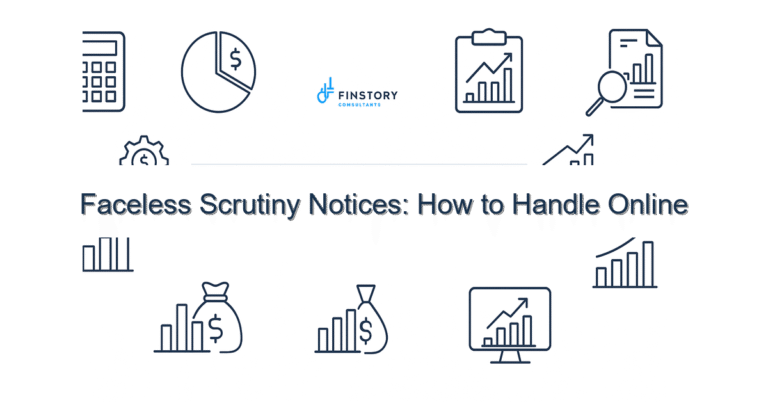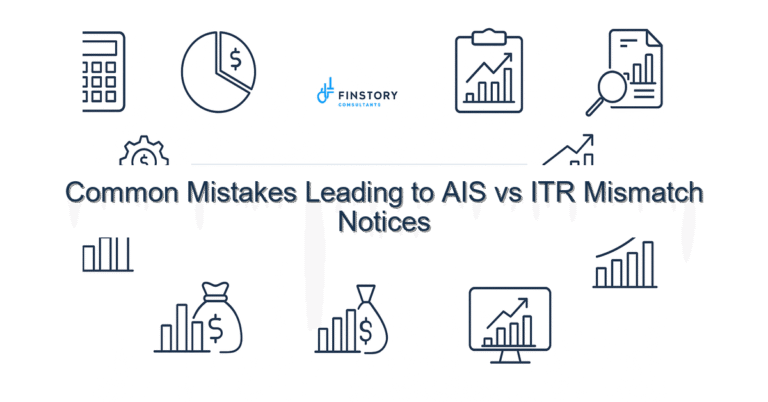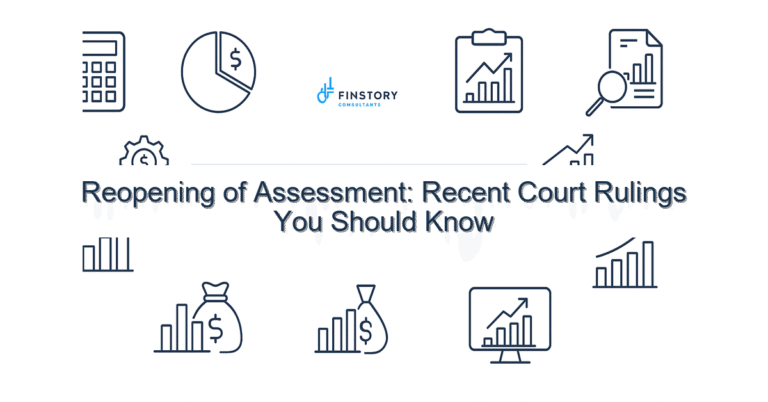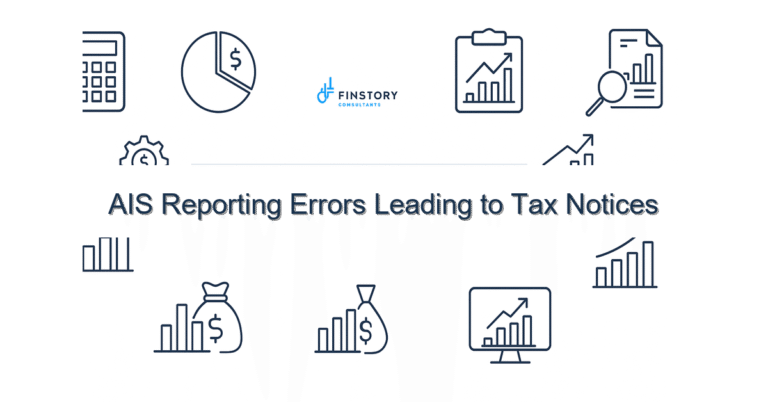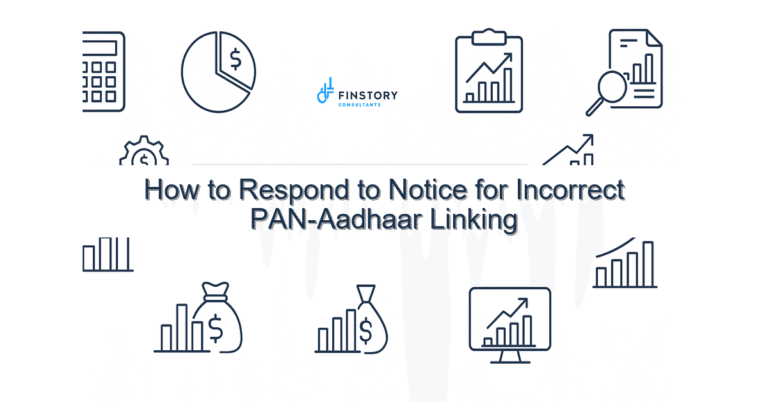Section 143(1)(a) Intimation: How to Check and Correct Errors
Seeing an intimation under Section 143(1)(a) can feel like a sudden hiccup in your busy life—especially if you are a salaried employee, professional, founder or MSME owner. You’re not alone: small mismatches in TDS, bank interest or capital gains can trigger these letters, and they can be stressful if you don’t know what to do next.
Summary: Section 143(1)(a) intimation is usually a computational or mismatch notice after ITR processing. Check AIS/26AS and e-filing figures, reconcile differences (TDS/TCS, bank interest, capital gains indexation), and respond or file a revised return quickly to claim refunds or avoid escalation. For complex gaps, seek professional help.
What’s the real problem in India?
In India, tax administration uses automated checks after you file your ITR. Section 143(1)(a) is an intimation that either your tax calculation differs from the Income Tax Department’s records or there was a computational change. The system compares your return with third-party data like AIS/26AS, TDS/TCS statements and bank reports.
Common administrative confusions include assessment year (AY) vs previous year (PY), CBDT timelines for notices, and different forms/reporting formats for capital gains and exempt income. Small slips cause disproportionate anxiety.
- Symptom: Your refund is smaller than expected or reversed.
- Symptom: You received a mismatch for TDS/TCS though your employer/tenant filed it.
- Symptom: Bank interest or short-term capital gains reported differently in AIS/26AS versus your ITR.
- Symptom: You missed the ITR filing last date or didn’t claim Section 80C limit fully and worry about notices.
What people get wrong
Many taxpayers assume an intimation is an accusation. In most cases it is not — it is a prompt to reconcile figures. Common mistakes:
- Not checking AIS/26AS before filing ITR — you should reconcile TDS/TCS entries and third-party credits first.
- Ignoring small bank interest that pushes total income over a tax slab threshold (new vs old regime slabs matter here).
- Assuming the income tax india e-filing system will automatically match capital gains indexation — report the correct indexed cost or you’ll show higher gains.
- Delaying a response: some intimations require correction within the statutory window, or they turn into notices under other sections.
A better approach
Think of the intimation as a checklist, not a threat. Use this simple framework to clear most issues quickly.
- Verify: Download AIS/26AS and compare TDS/TCS, tax credits, and reported income with your ITR.
- Reconcile: Match bank interest, salary TDS, and ITR figures. If differences come from third-party reporting errors, get documents from the payer (employer/bank/tenant).
- Respond/Correct: If your ITR is wrong, file a revised return or respond on the e-filing portal as per the intimation instructions.
- Document: Keep emails, TDS certificates and bank statements ready; these are needed if you escalate to a rectification or appeal later.
- Consult: For capital gains indexation, business income, or large refunds, consult a tax expert to avoid repeated corrections.
Real-world example: A Mumbai startup founder received a 143(1)(a) intimation because company-paid stock option tax credits were not reflected in AIS/26AS. After obtaining a Form 16B and payroll proof, the founder filed a revised ITR and recovered a 28,000 INR refund within 45 days.
Quick implementation checklist
- Download your AIS/26AS from the TRACES portal or e-filing site this week.
- Open your filed ITR and mark all income heads: salary, business/profession, capital gains (use capital gains indexation where applicable).
- Cross-check TDS/TCS entries (Form 16/Form 16A/Form 26QB) against AIS/26AS.
- Look for unreported bank interest and other small incomes; add them if missed.
- If the mismatch is due to TDS not credited, request the deductor to correct and re-file TDS return.
- If you under-reported, prepare to file a revised ITR within the statutory time limit.
- Save all supporting docs: TDS certificates, bank statements, sale deeds or contract notes for securities.
- Use the e-filing portal to respond or upload explanations under the intimation section.
- If stuck, book a consultation: bring AIS/26AS, ITR acknowledgement and correspondence to speed up resolution.
What success looks like
When you handle a Section 143(1)(a) intimation properly, outcomes are measurable and reassuring:
- Refund recovered within days or weeks instead of months (refund % increases).
- Fewer follow-up notices from the tax department.
- Shorter resolution times — most recomputations finish faster when supported by documents.
- Clean records for ITRs in subsequent years — fewer mismatches in AIS/26AS.
- Lower risk of interest/penalty due to timely corrections.
Risks & how to manage them
Risk: Ignoring the intimation can invite further scrutiny or penalties. Manage by responding within timelines and documenting every step.
Risk: Filing an incorrect revised return. Manage by double-checking computations and, if necessary, engaging a chartered accountant or tax specialist.
Risk: Third-party data (TDS/TCS) wrong. Request corrective TDS statements from the deductor and keep written communication as proof.
Tools & data
Use these India-specific tools to reconcile and track your tax position:
- AIS/26AS (download from the e-filing portal) — master record for TDS/TCS and tax credits.
- Income-tax e-filing portal — to view intimation, respond, or file a revised return.
- TDS/TCS tracking tools and payroll software — compare employer records with AIS/26AS.
- Spreadsheet or accounting software for reconciling capital gains and applying capital gains indexation.
- Reference pages for ITR forms, ITR filing last date, Section 80C limit and new vs old regime slabs to understand impacts on tax payable.
FAQs
Q: Is Section 143(1)(a) the same as an income tax notice?
A: No. Intimation under 143(1)(a) is typically an automated recomputation or mismatch notice. A notice under other sections may require more detailed response or appear later if mismatches persist.
Q: I found an error after the ITR filing last date. Can I still fix it?
A: Yes, you can file a revised ITR within the statutory window (usually within the relevant assessment year). For missed deadlines, rectification or other remedies may apply — consult a tax professional.
Q: My AIS/26AS shows lower TDS than my Form 16. What do I do?
A: Request your employer to correct the TDS return and re-file if required. Keep Form 16 and communication as evidence. If urgent, file a response to the intimation explaining the discrepancy with proof.
Q: Does capital gains indexation get automatically applied?
A: No. You must compute indexed cost of acquisition and report it in the correct ITR schedule. Misreporting can increase tax and trigger a 143(1)(a) intimation.
Next steps
If you received a Section 143(1)(a) intimation, start with AIS/26AS reconciliation and gather TDS/TCS documents. If the discrepancy is straightforward, follow the checklist above and file a revised return or response. If the issue involves capital gains, employer credits, or business income, it’s wise to consult an expert.
Want help resolving it quickly? Contact Finstory for a tailored review — we handle reconciliations, revised filings and responses so you can focus on your work.
[link:ITR guide] [link:tax-saving tips]
Work with Finstory. Speak with an Expert for a personalised plan to reduce your tax outgo and stay compliant. Book a free 20-min consultation.
📞 Need help with Income Tax in India?
Book a 20-min consultation with our tax team. Individuals, founders & MSMEs welcome.
Prefer email or phone? Write to info@finstory.net
or call +91 44-45811170.

